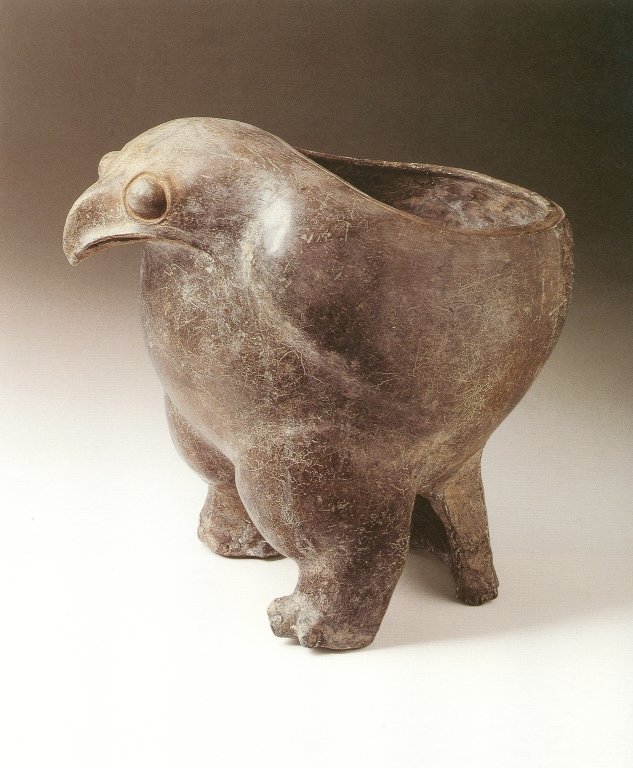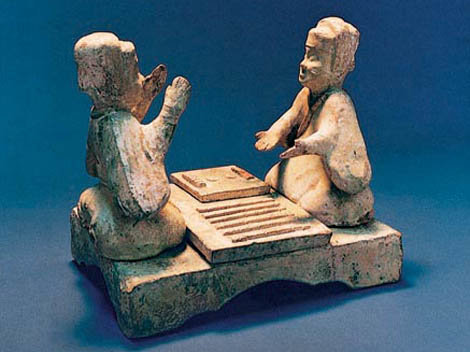Introduction
The Neolithic period is one of the most fascinating periods in the Chinese history; a period believed to have started in 10,000 B.C. and came to an end eight thousand years later. This period was characterized by a population, which solely depended on crop and domestic animal farming as opposed to gathering and hunting as considered as common ancient economic activities.
Like in other parts of the world, Chinese Neolithic inhabitants preferred occupying regions along rivers and lakes for easy access of water, which was a major family need. Of great significance is the Chinese artistic tradition that has its core traces in the middle of the Neolithic group (The Metropolitan Museum of Art 1).
There are groups of artifacts which prove the existence of the tradition. This paper analyses, pottery culture during the Neolithic culture with special emphasis on some of the social reasons which prompted the development of the culture. Additionally, several images have been compared with a thorough discussion of the social importance of certain artifacts within the historical environment.
Categories of artifacts
As mentioned above, Chinese artistic tradition was divided into two categories. The first group was the painted pottery which was common along the Yellow River Basin that stretched to the northwestern part of China from Gansu province. Yangshao emerged in the central region while Machang, Banshan and Majiayao were witnessed in the northwest region (The Metropolitan Museum of Art 1).
Yangshao pottery was done using coils of clay, which were stuck together and smoothened into customized shapes and sizes. Pottery containers from graves were principally painted with red and black color to signify pain and mourning. It is believed that this practice depicts ancient use of brushes for several linear compositions among others.
The second category of Neolithic artifacts encompassed jade carvings and pottery originating from the eastern seaboard and the lower side of the Yangzi River towards the southern direction (Jiang and Liu 356). This representation included Hemedu, Liangzh, Dawenkou and Longshan. It is important to mention that Eastern China pottery was distinctively known for its unique shapes as compared to those from the central region, which mainly included the tripod that later remained significant during the Bronze Age.
Even though some paintings from the eastern region were painted as part of decorations, those from the coast mainly utilized burnings and technical incising. Notably, the craftsmen of the Neolithic period in China have been recognized throughout history for their invention of the Wheel (The Metropolitan Museum of Art 1).
Another important aspect of Chinese culture during this period was the use of jade among potters. This made lifetime contributions into what was later known as Chinese civilization (Pryor 1). Stone was also commonly used in making designs among the Neolithic settlements. The best stones were always chosen depending on their strength and quality before being fashioned into desired items of value.
Nephrite, also known as “true jade”, was considered tough and strong by most craftsmen and was therefore frequently used than other stones in the region at that time. This was a common phenomenon in Zhejiang and Jiangsu especially towards the end of the Neolithic period (Pryor 1). An important feature of jade was its hardness, and proved tough during carving as it required a strong knife and always turned out to be laborious.
Incised decorations and glossy polished surfaces required high skills and extraordinary patience from craftsmen in order to realize outstanding good results. Archeological findings have always revealed the presence of jade in and commonly placed alongside privileged dead bodies before burial could take place.
Axes
Like other artifacts during the period, jade axes (tool used during burial and was associated with high punishment) were symbolic and carried unique message for the public. Besides being used during burial, they also symbolized harsh punishment especially in cases where one was found guilty of a serious criminal offense. After carving of the axe, it was always fixed into a stick which served as the handle. It also denoted gaining of power by one person to lead others (Thorp and Vinograd 35). The significance of Jade axes tremendously evolved, making them to become symbols of social importance.

Regional pottery and art
As mentioned above, the Neolithic period saw the emergence of artifacts and designs which later became the foundation of the Bronze Age. These carvings and other forms of art were unique depending on the geographical location since different people valued art uniquely.
As a result, provinces and even villages identified themselves with certain designs with a few similarities being noted. Additionally, artifacts carried meaning that was easily communicated within the area of origin as different groups of people had customized interpretation and understanding of art as described below.


Yangshao Village
Yangshao Village (a village found on the western side of Henan near the Yellow River) had a wide range of potteries during the Neolithic period with special focus on 4500 B.C. Most of its artifacts carried complicated designs even though one could easily consider them to be simple, with three distinctive categories being recognized. These included owl (owl figures were 36 cm in height and were designed to stand freely), animal and lady figures (Thorp and Vinograd 47). Based on these groups, it suffices to mention that each artifact within a given class symbolized a certain aspect of people’s life.
Therefore, their presence always had unique interpretation by the people of that time. Although its meaning was not quite clear to many, owl images were common in the village and they took different shapes and designs as chosen by the artist. The design and most features of most owl images indicated the strength of the animal. Other people also believed that owl represented the messenger of some supernatural being that was beyond their knowledge and understanding.
On other occasions, they were used to imply the need for people to stay awake during the night for their own safety (Thorp and Vinograd 48). On the other hand, fish figures depicted the lifestyle of people at the moment as fishing was one of the economic activities of the time and a major source of food. The first owl image above denotes the strength of the animal from its strong wings and legs.
Being a core aspect of any community, fertility was also represented through art. Frog images were commonly used to denote this as they were designed with a human shape and artistic decorations. Common features included legs and the use of three to four colors as part of the final touches to make the figure more attractive. They were generally made by hand although they always had asymmetric shape (Thorp and Vinograd 50).

Another village which valued artistic images and figures was Dahe in Henan Province. People from this village expressed their ideas through figures also witnessed in other regions during this period. Axe, bird and fish figures were quite common and signified their daily lives in terms of economical aspect of living. Farming was a common practice together with fishing. The figures emphasized how their daily lives were shaped.
Similarly, Xia Dynasty (regarded as the first dynasty in the history of China) and Shang Dynasty valued pottery and their cultures. There were three subjects that were common and significant in these dynasties (Thorp and Vinograd 256). These were sky, earth and people. People from these dynasties believed that the earth produced rulers of the earth and the universe.
Their tombs were however characterized by several layers which implied the existence of numerous layers of the universe. Several figures were also recognized including the axe and Vassal among others, with each pottery denoting a specific meaning or aspect of their lives. Some of the images like gold seals were a symbol of wealth and material ability for the community and were common in tombs.

Conclusion
From the above analysis of pottery and art culture during the Neolithic period, it is evident that most people of this age highly valued their culture pricelessly. Through expert skills and knowledge, they expressed their feelings, lifestyle and other aspects of life through artistic figures and decorations.
Of significance is the image of animals among their potteries (Kuijt 297). Common animals included owls and fish whose symbolic meaning revolved around the nature of their daily life and the existence of a supernatural being respectively. Social status was also represented by several artistic images like tombs with solid gold which always symbolized a sense of wealth and high social status.
Other elements of high standards of living included but not limited to golden horse, mirror, cosmetic containers and elegant dining ware. In general, Neolithic period significantly prepared people for the Bronze Age that was experienced later on. There were several artifacts which found way in this age, implying the importance of Neolithic period in Chinese history and Cultural Revolution.
Works Cited
Jiang, Leping, and Liu Li. “New evidence for the origins of sedentism and rice domestication in the Lower Yangzi River, China.” Sedentism and rice domestication in South China 80 (2006): 355-361.
Kuijt, Ian. Life in Neolithic farming communities: social organization, identity, and differentiation. London: Springer, 2000. Print.
Pryor, Francis. “Overview: From Neolithic to Bronze Age, 8000 – 800 BC.” BBC News 2011. Web.
The Metropolitan Museum of Art. Neolithic Period in China, 2011. Web.
Thorp, Robert, and Vinograd Richard. Chinese art & culture. New York: Abrams, 2001. Print.